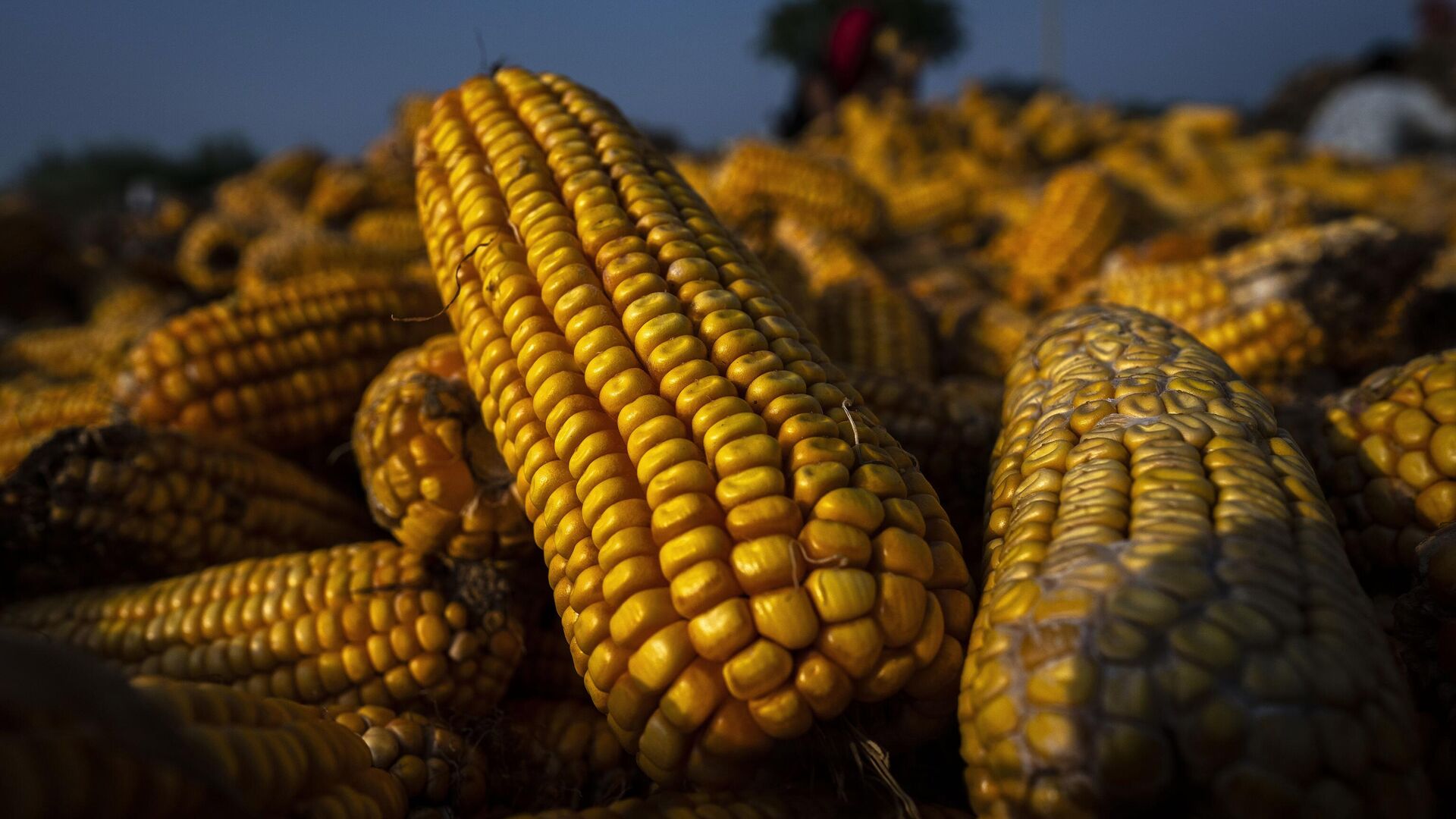https://sputniknews.in/20230123/cotton--maize-yield-may-dip-about-13-in-indias-punjab-due-to-climate-change-602748.html
Cotton & Maize Yield May Dip About 13% in India's Punjab Due to Climate Change
Cotton & Maize Yield May Dip About 13% in India's Punjab Due to Climate Change
Sputnik India
A study published by Punjab Agriculture University predicted that cotton and maize yield in the state will be impacted by at least 11 percent and 13 percent by 2050 due to climate change.
2023-01-23T18:13+0530
2023-01-23T18:13+0530
2023-01-23T18:13+0530
india
punjab
climate change
environment
food shortage
https://cdn1.img.sputniknews.in/img/07e7/01/17/604670_0:160:3073:1888_1920x0_80_0_0_f6fbe10dd72761eb3f489c6c9fdcd0c4.jpg
A study published by Punjab Agriculture University suggests that cotton and maize yield in the state will drop by at least 11% and 13%, respectively by the year of 2050.The reason behind it is reportedly climate change.The study, published in the India Meteorological Department's journal, picked five major crops from Punjab — rice, maize, cotton, wheat, and potato along with their yearly yields and used rainfall and temperature data collected between 1986 and 2020 to reveal trends in the crop production."Changes in minimum temperature have resulted in changes in mean temperature throughout all growing seasons. It means that the minimum temperature has shown a rising trend," the scientists say in their study.The rise in minimum temperature is not good for crops like rice, maize, and cotton, while it is beneficial for potatoes and wheat.The yield loss will increase from 13% to 24% for maize, 11% to 24% for cotton, and 1% to 2% for rice, respectively. However, potato and wheat production will remain the same.It is worth noting that Punjab contributes almost one-fourth of the total cereal grains across the country.
india
punjab
Sputnik India
feedback.hindi@sputniknews.com
+74956456601
MIA „Rossiya Segodnya“
2023
Deexa Khanduri
https://cdn1.img.sputniknews.in/img/07e6/0c/13/138923_52:0:533:481_100x100_80_0_0_cadf23d341691fc65ff2b22fd1afe584.jpg
Deexa Khanduri
https://cdn1.img.sputniknews.in/img/07e6/0c/13/138923_52:0:533:481_100x100_80_0_0_cadf23d341691fc65ff2b22fd1afe584.jpg
News
en_IN
Sputnik India
feedback.hindi@sputniknews.com
+74956456601
MIA „Rossiya Segodnya“
Sputnik India
feedback.hindi@sputniknews.com
+74956456601
MIA „Rossiya Segodnya“
Deexa Khanduri
https://cdn1.img.sputniknews.in/img/07e6/0c/13/138923_52:0:533:481_100x100_80_0_0_cadf23d341691fc65ff2b22fd1afe584.jpg
indian meteorological department, punjab crops, rice, maize, cotton, wheat, potato, crop production, punjab agriculture university
indian meteorological department, punjab crops, rice, maize, cotton, wheat, potato, crop production, punjab agriculture university
Cotton & Maize Yield May Dip About 13% in India's Punjab Due to Climate Change
Deexa Khanduri
Sputnik correspondent
Extreme weather conditions, such as unusual heat waves, excessive rainfall, and severe cold waves, are the main factors impacting crops.
A study published by Punjab Agriculture University suggests that cotton and maize yield in the state will drop by at least 11% and 13%, respectively by the year of 2050.
The reason behind it is reportedly climate change.
The study, published in the India Meteorological Department's journal, picked five major crops from Punjab — rice, maize, cotton, wheat, and potato along with their yearly yields and used rainfall and temperature data collected between 1986 and 2020 to reveal trends in the crop production.
Researchers found that while the average decadal rainfall in Punjab had decreased, the number of heavy rainfall incidents, on the contrary, has been on the rise.
"Changes in minimum temperature have resulted in changes in mean temperature throughout all growing seasons. It means that the minimum temperature has
shown a rising trend," the scientists say in their study.
The rise in minimum temperature is not good for crops like rice, maize, and cotton, while it is beneficial for potatoes and wheat.
The yield loss will increase from 13% to 24% for maize, 11% to 24% for cotton, and 1% to 2% for rice, respectively. However, potato and wheat production will remain the same.
It is worth noting that Punjab contributes almost one-fourth of the total cereal grains across the country.


